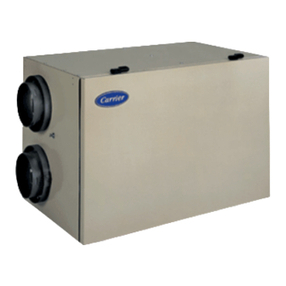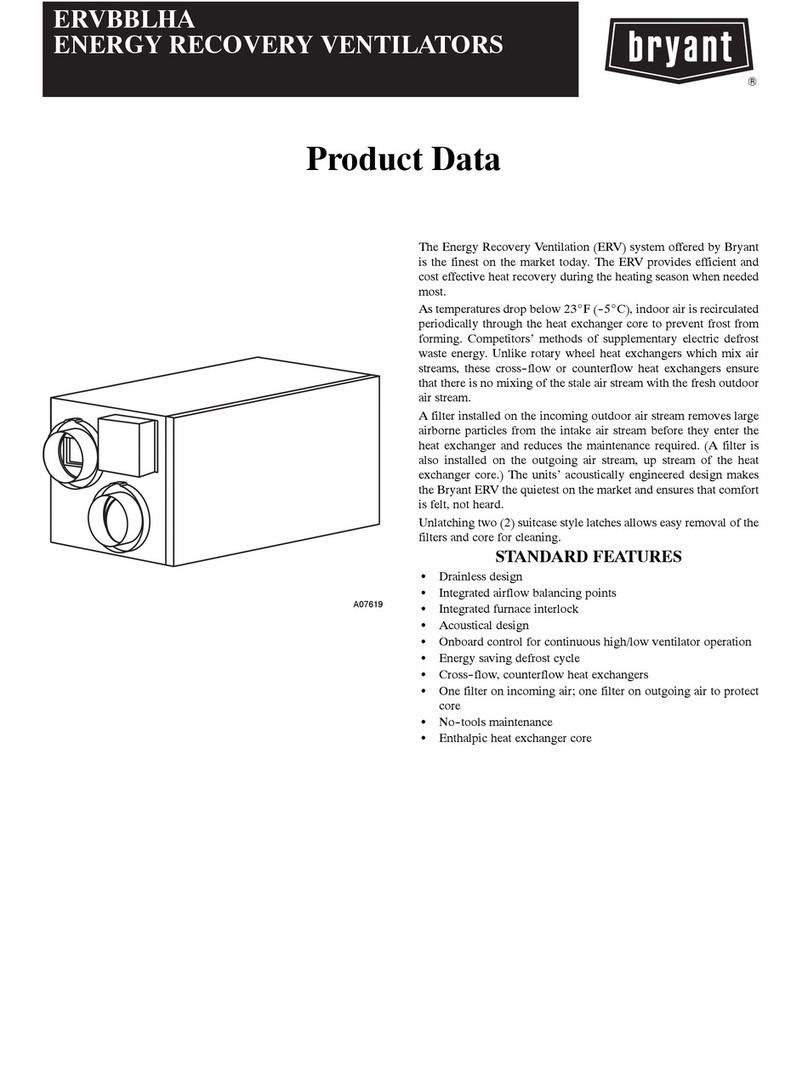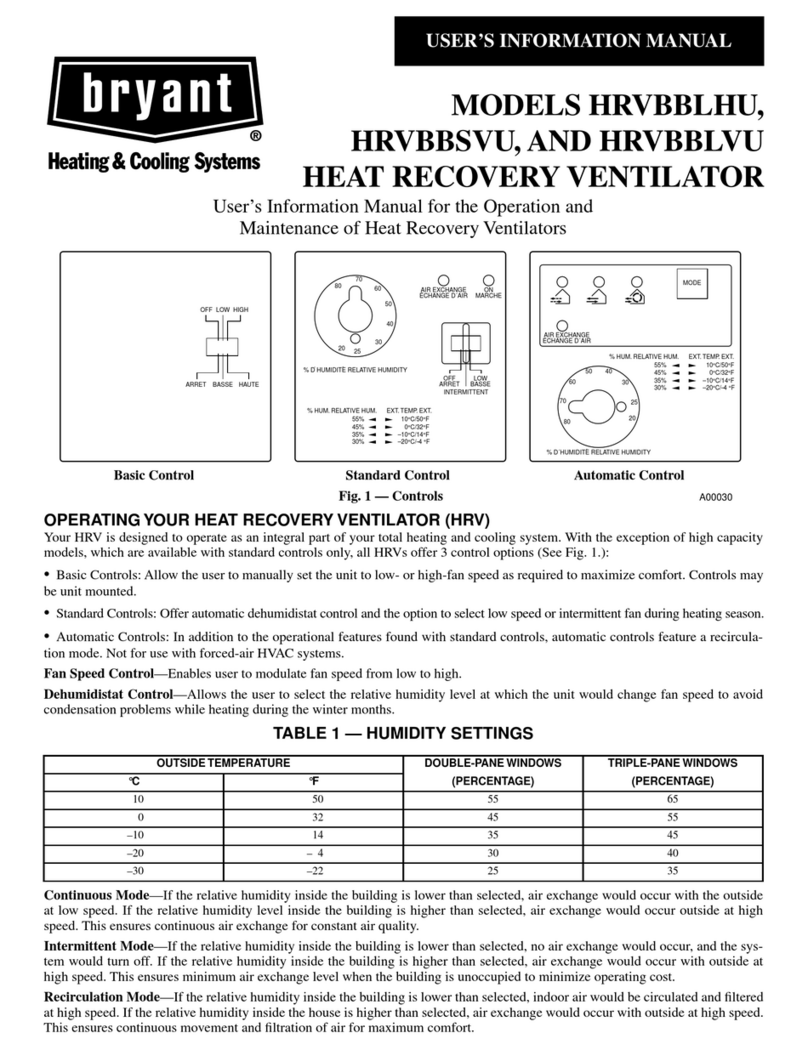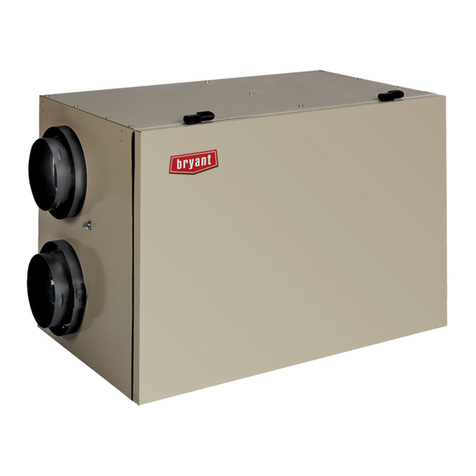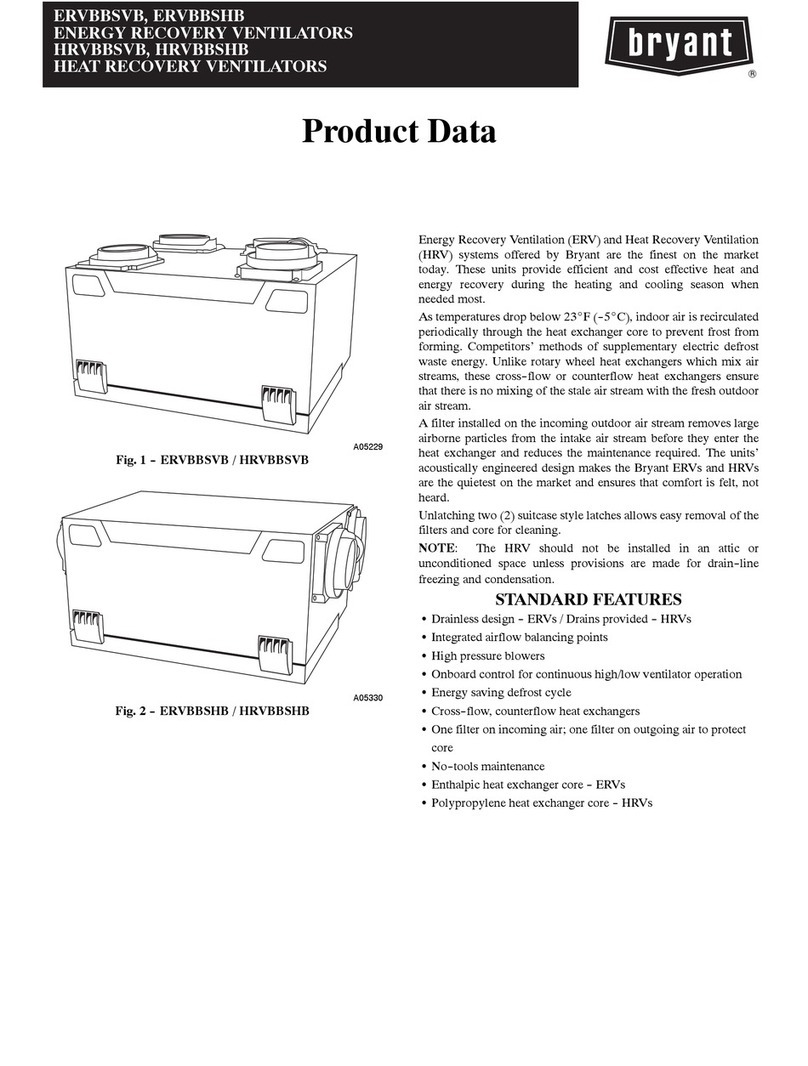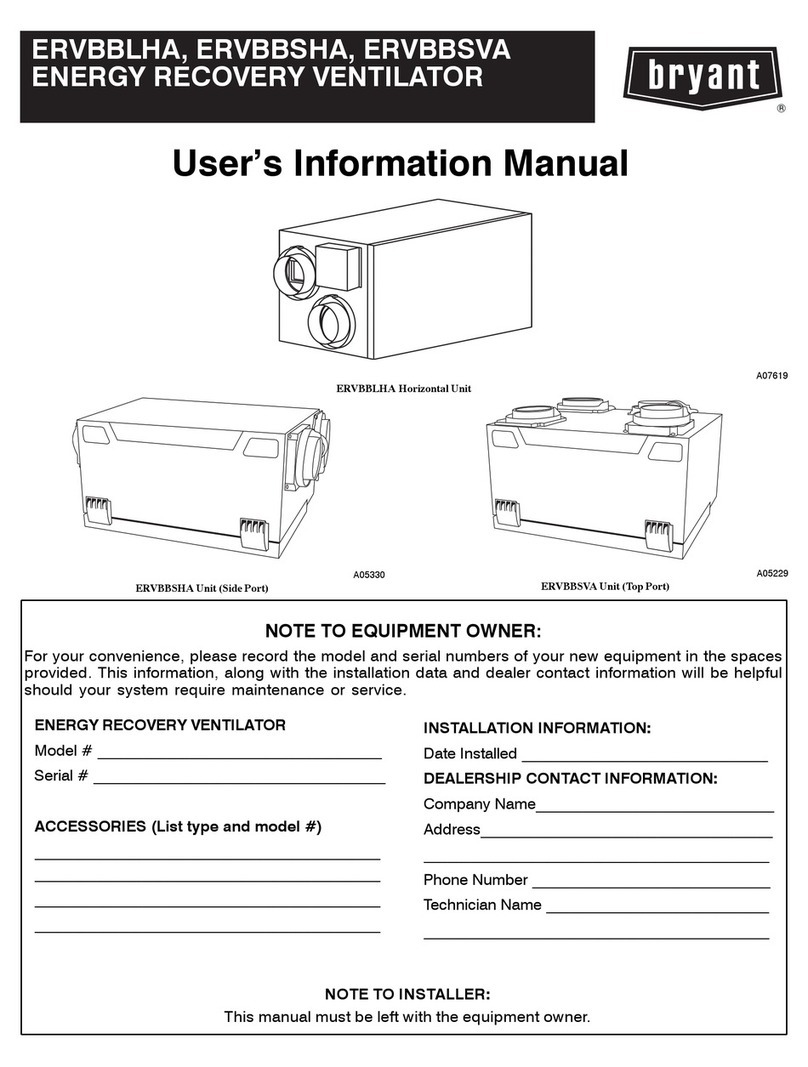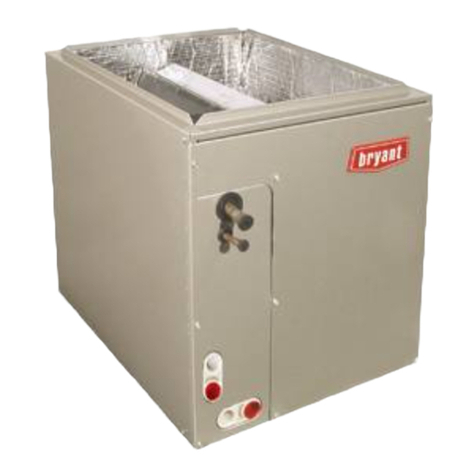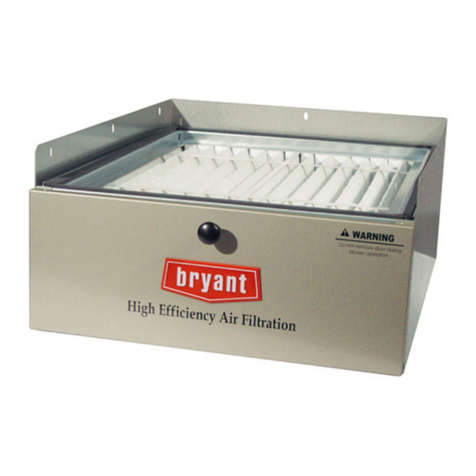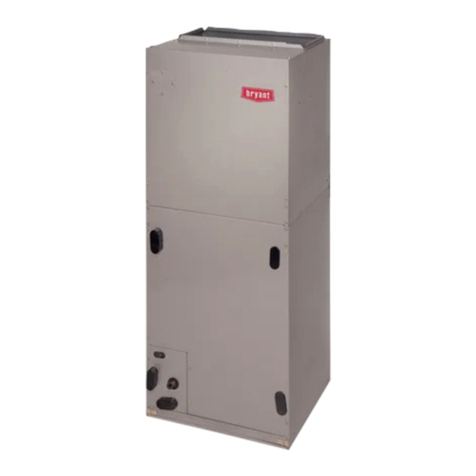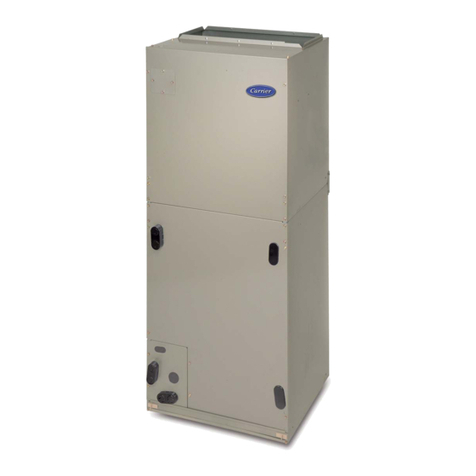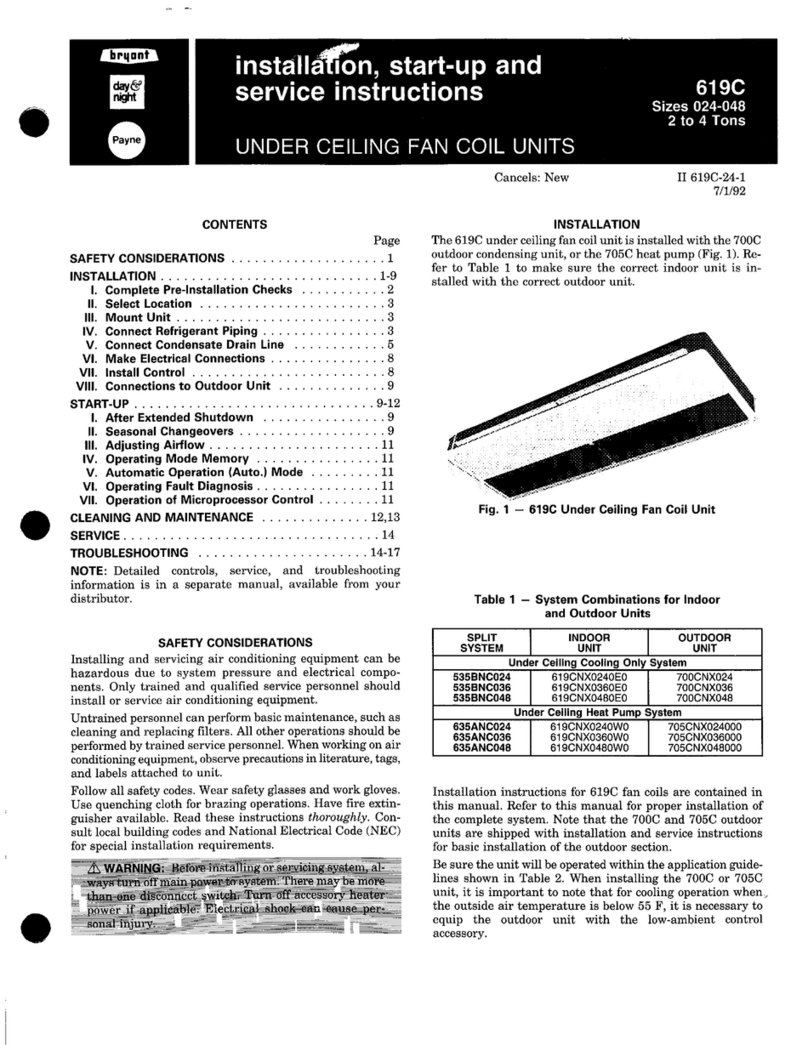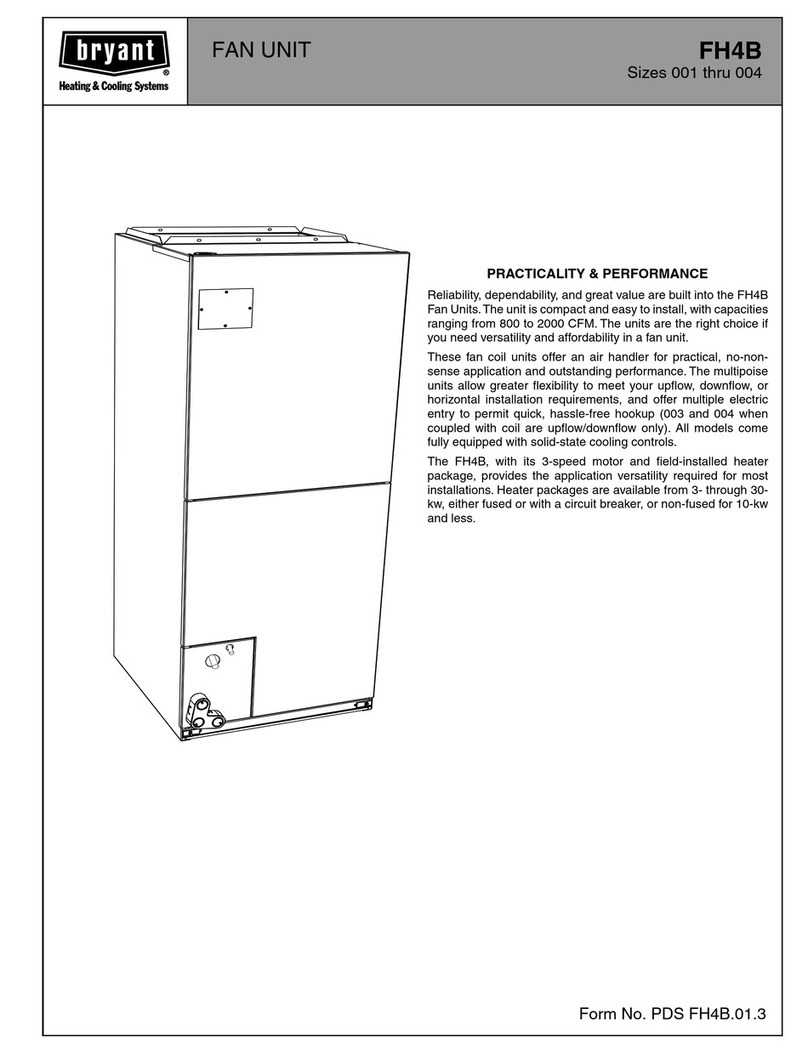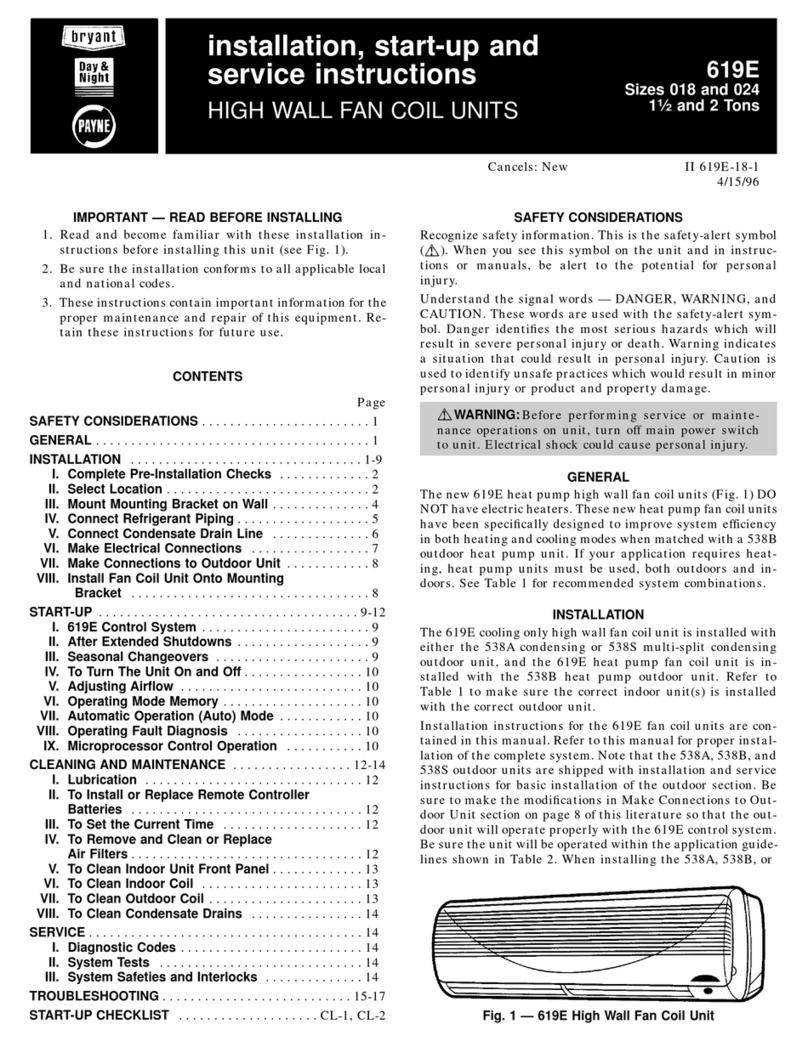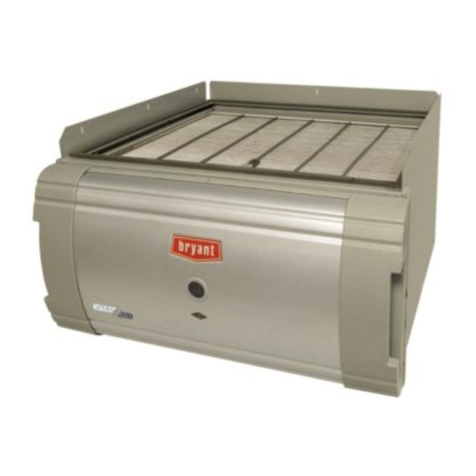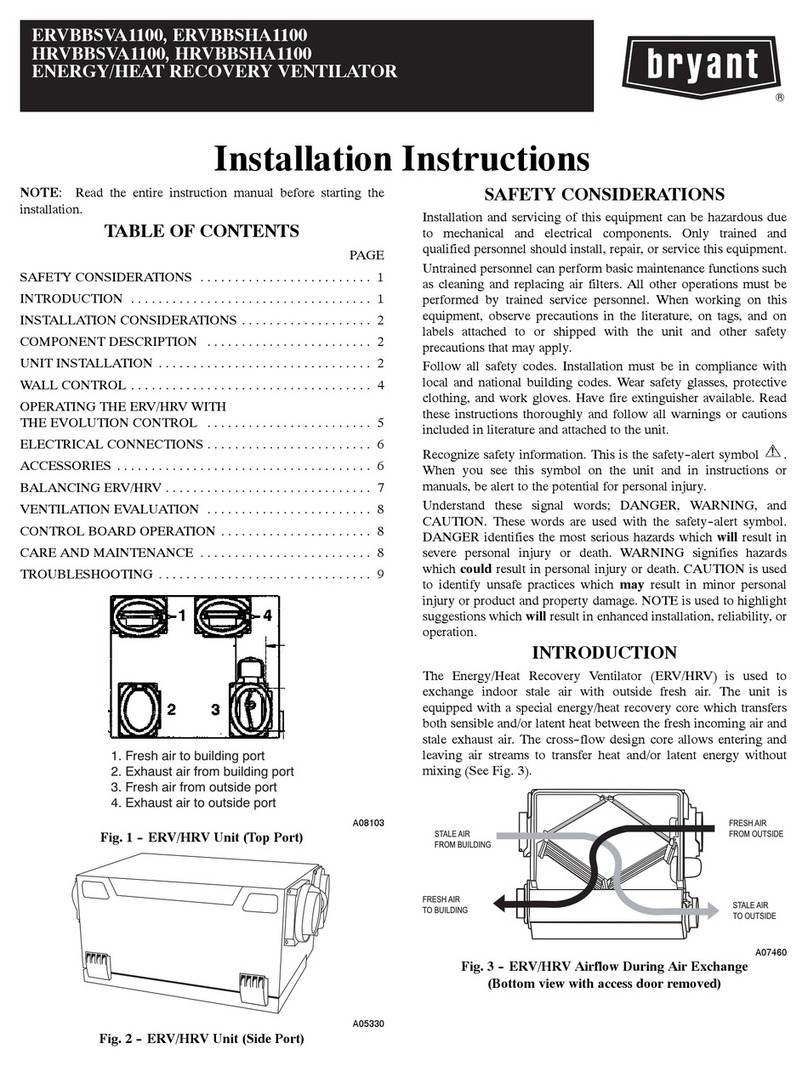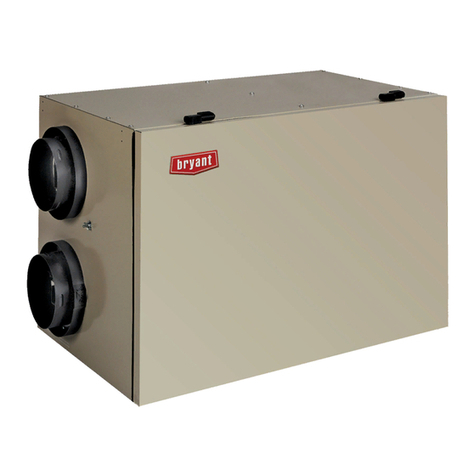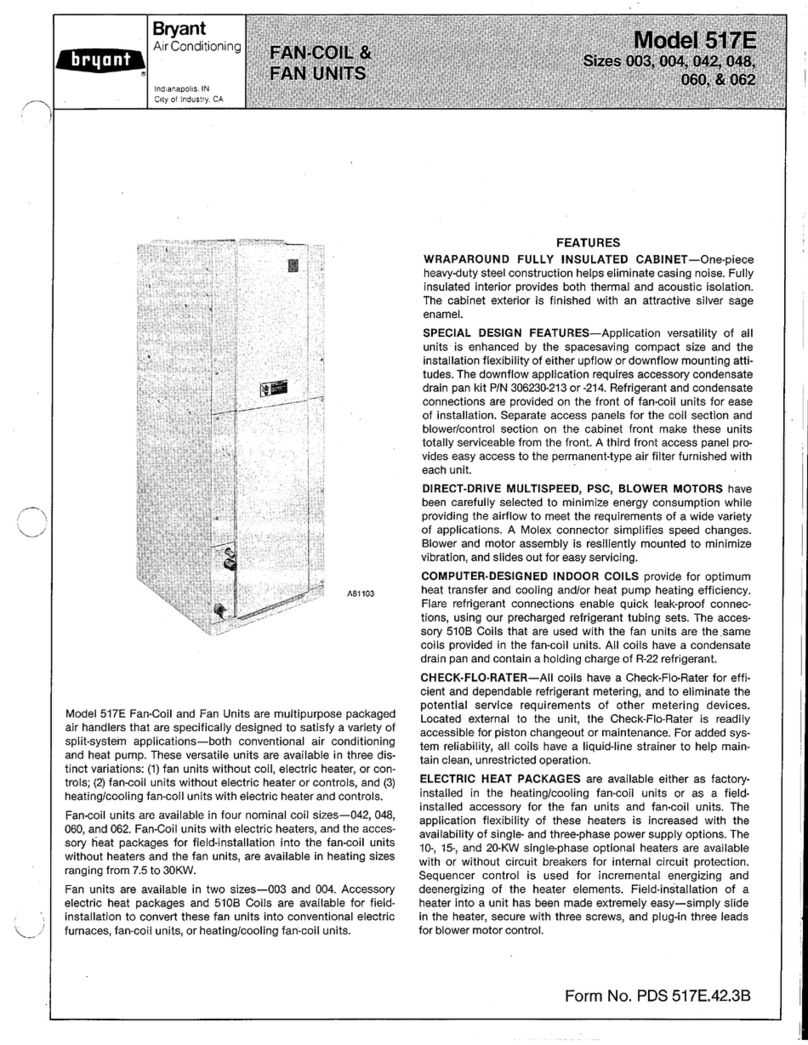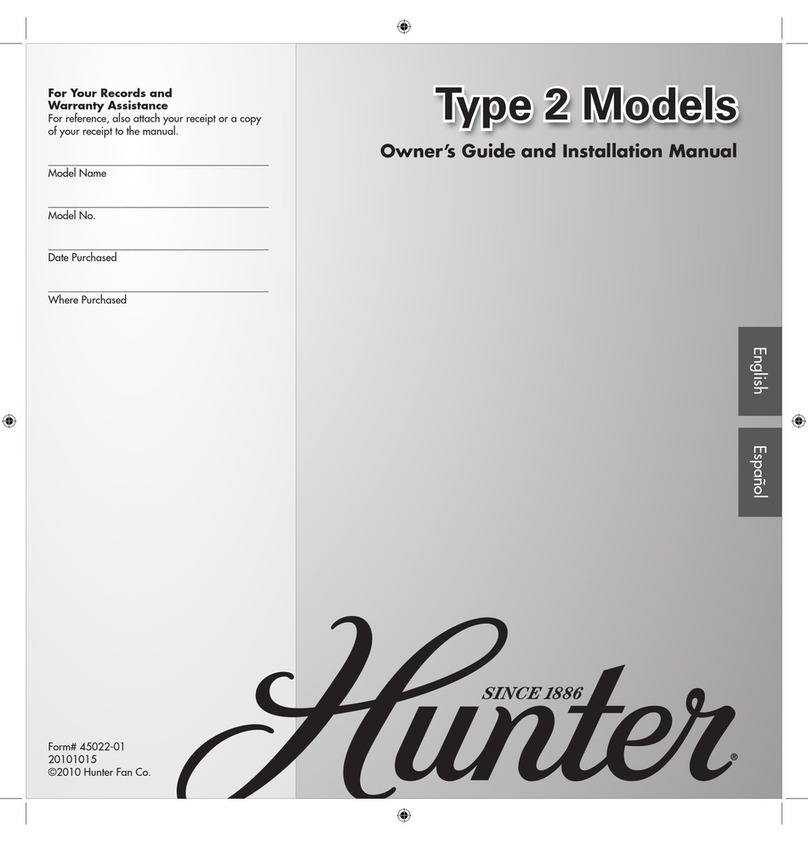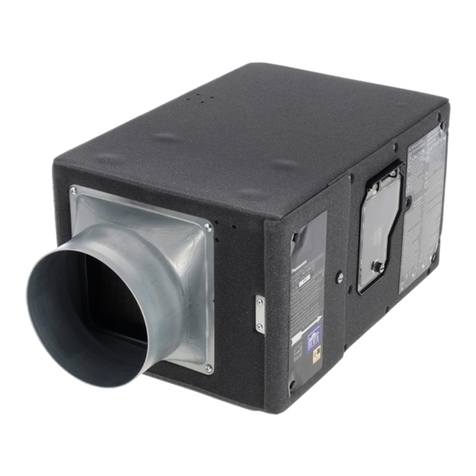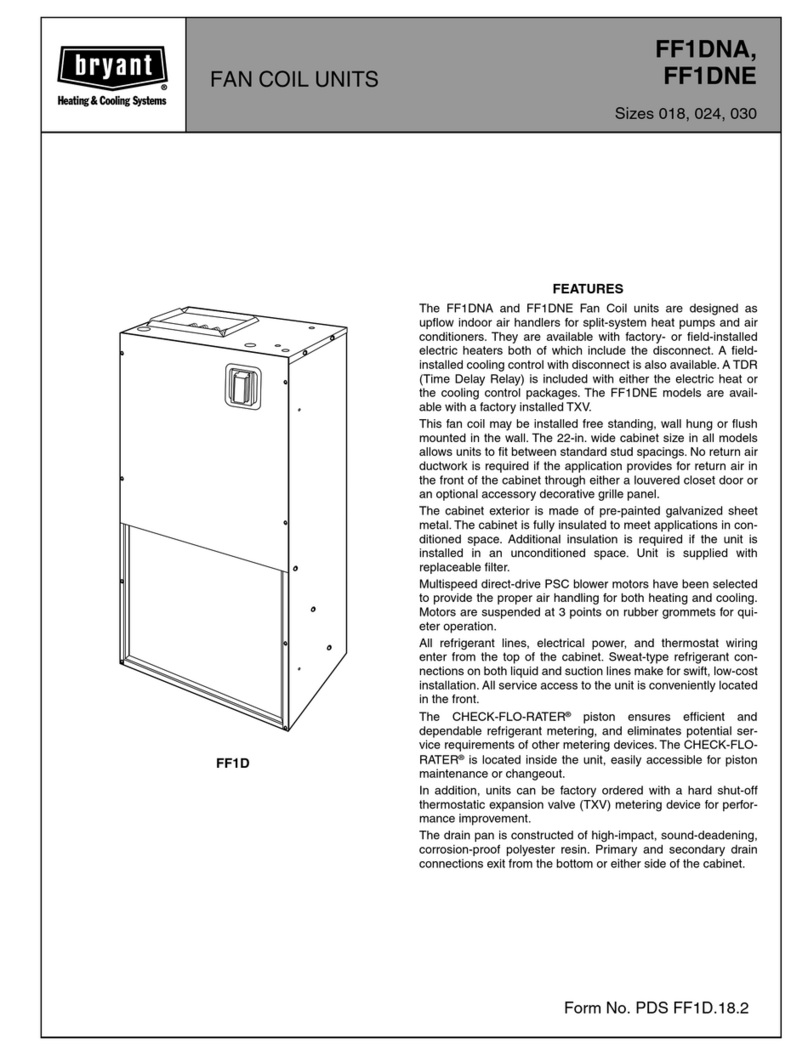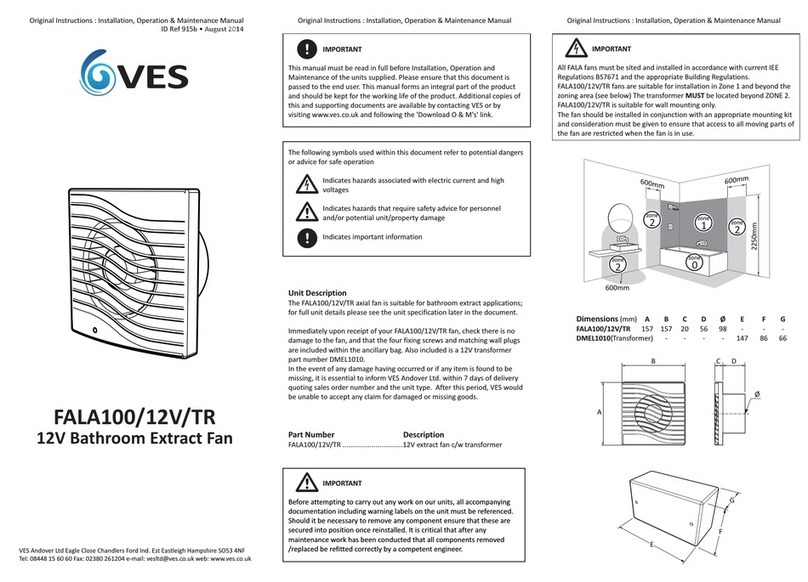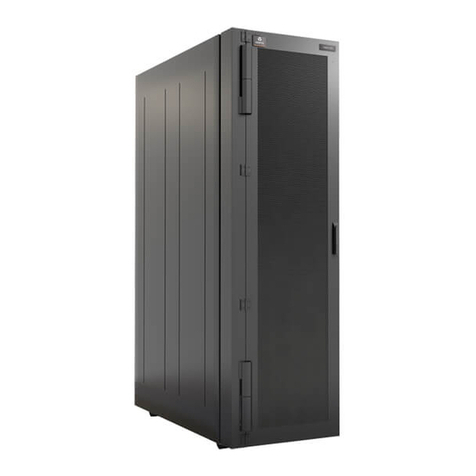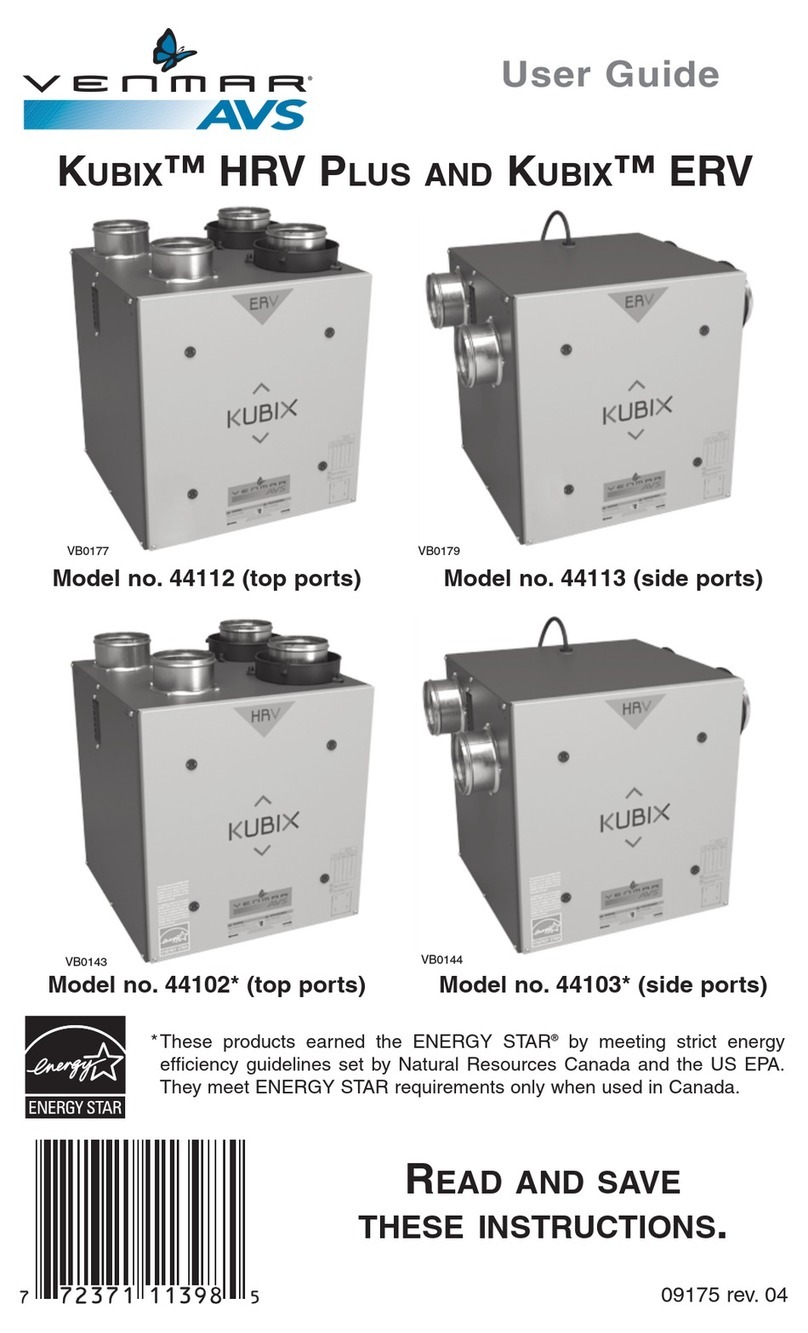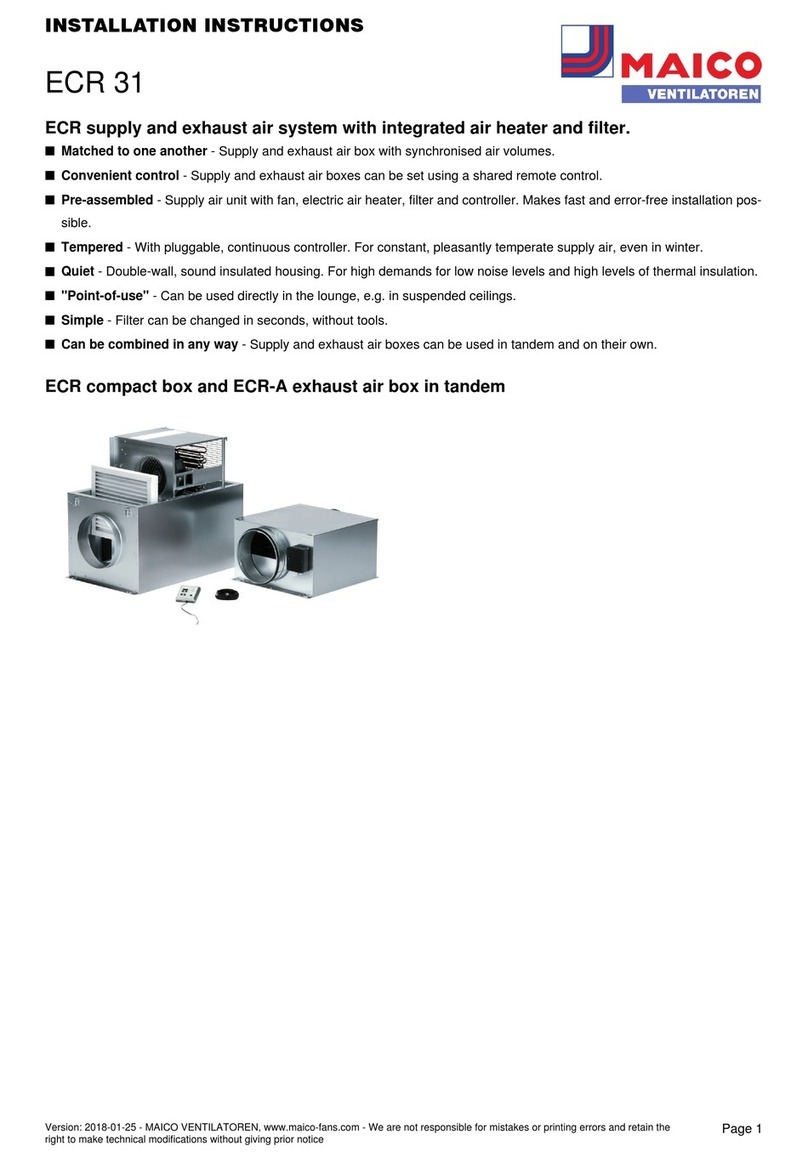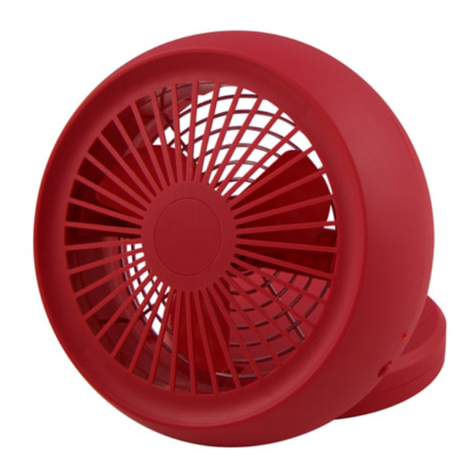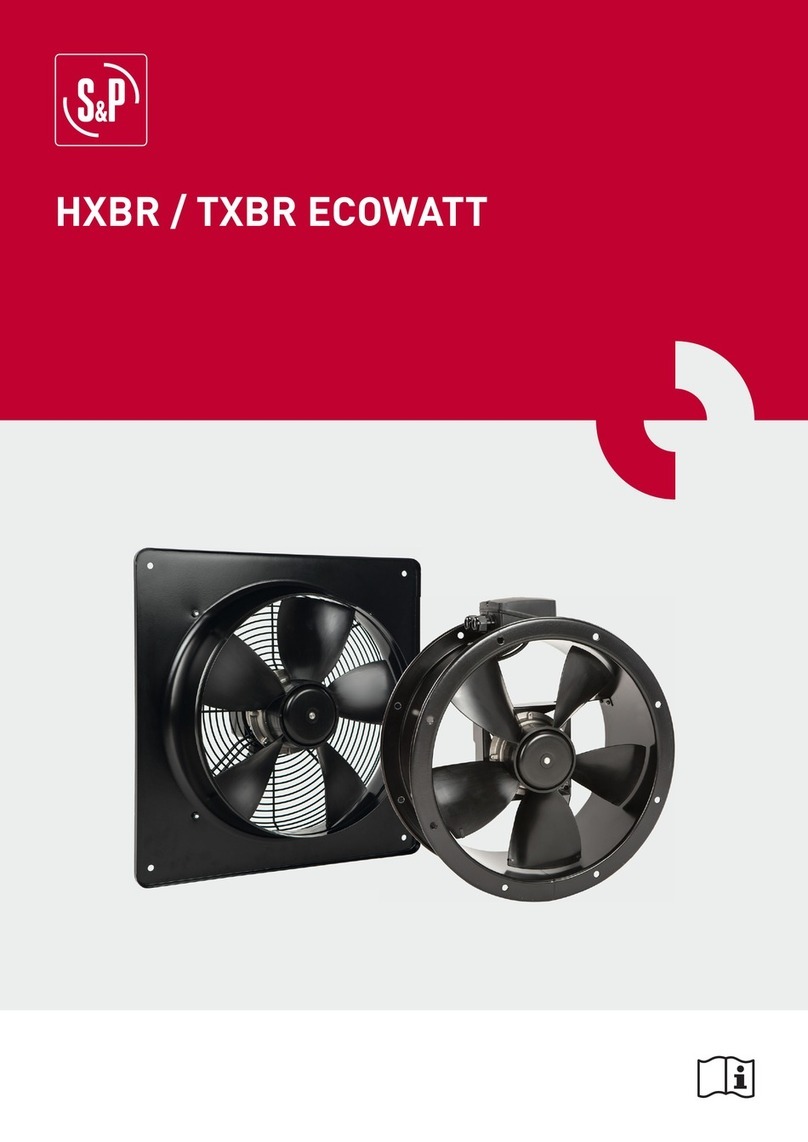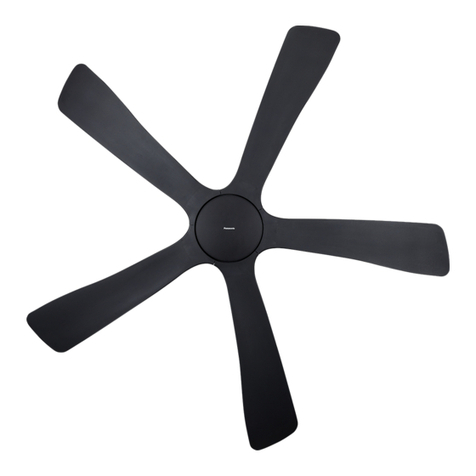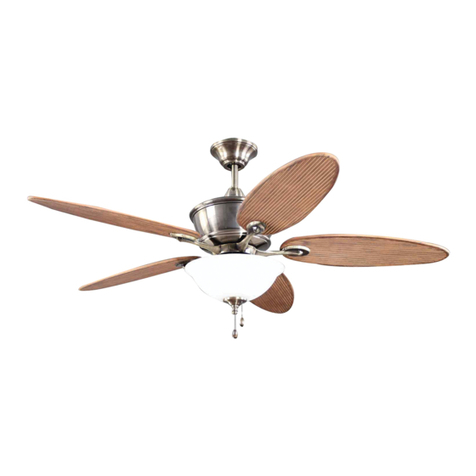
SEQUENCE OF OPERATION
A. Cooling
Turn on power to unit. Set thermostat SYSTEM switch at
COOL and FAN switch at AUTO. Set thermostat at setting
below conditioned space temperature. The first-stage cooling
contacts will close.
If the outdoor-air enthalpy is below the enthalpy control set-
ting, the indoor blower motor starts and the outdoor-air damper
modulates to maintain the mixture of outdoor air and return
air at the mixed-air temperature setting. The outdoor-air fans
and compressors remain off.
If the outdoor air is above enthalpy control setting, the outdoor-
air damper moves to vent position. Cooling operation is as
described for base unit in unit Installation Instructions.
A freeze protection thermostat (FPT) is located on the indoor
coil. It detects ice buildup and turns off the compressor, thus
allowing the coil to clear. Once ice melts, the compressor can
be re-energized.
B. Heating
Turn on power to unit. Set thermostat SYSTEM switch at
HEAT and FAN switch to AUTO. Set thermostat at setting
above conditioned space temperature. The thermostat first-
stage heating contacts will close.
The outdoor-air damper will move to vent position. The heat-
ers and indoor blower motor will operate.
The outdoor-air damper will close, the indoor blower and the
heaters will shut off when the thermostat is satisfied.
C. Power Failure
The damper is equipped with a spring return. In the event of
power loss, the dampers will close until power is restored. Do
not manually operate damper motor. Damage to motor will
result.
MAINTENANCE
I. OUTDOOR-AIR INLET SCREENS
Loosen filter retainers and remove screens. Clean screens with
steam or hot water and detergent. Do not replace screens with
disposable filters.
II. ECONOMIZER ADJUSTMENTS
Make certain the outdoor-air damper is fully closed and the
return-air damper is fully open before completing the follow-
ing steps.
1. Turn on power to the unit.
2. Turn the thermostat fan switch to the ON position. The
damper will go to the vent position.
3. Adjust the vent position with the minimum position
adjustment on the enthalpy control module located on
the damper motor. See Fig. 12 and 13.
4. Set the system selector switch to COOL position and
set the cooling temperature selector to its lowest
setting.
NOTE: The cooling mode may also be simulated by remov-
ing the thermostat wires from terminals Y1 and Y2 and
installing a jumper between terminals R andY1. Refer to unit
label diagram for terminal locations.
5. Set the enthalpy adjustment on the enthalpy control
module to ‘‘A’’ for maximum benefit of outdoor air. (See
Fig. 12). If the outdoor temperature is below 70 F, the
economizer will control the mixed air with the mixed-
air sensor. If the outdoor air is above 70 F, spray a small
amount of refrigerant into the upper left vent of the
enthalpy sensor. (See Fig. 15.)
6. Jumper terminal T to terminal T1 on the module (see
Fig. 12). The economizer will go to the full open posi-
tion. The outdoor-air damper will go to the full open
position, and the return-air damper will go to the full
closed position.
7. Adjust mechanical linkage, if necessary, for correct
positioning. It may be necessary to remove the filters
to adjust the linkage.
8. Remove the jumper from terminals T and T1 installed
in Step 6.
9. If the cooling mode was simulated to operate the unit
in Step 4, remove the jumper and reconnect the ther-
mostat wires to terminals Y1 and Y2.
10. Cooling lockout switch has fixed setting to prevent com-
pressor from operating with integrated economizer
below 50 F outdoor-air temperature.
11. Continue to the Enthalpy Control Checkout Proce-
dures section below, and follow the appropriate direc-
tions to test the enthalpy control.
Fig. 14 — Nomograph for Determining Enthalpy
Control Setting
—6—

